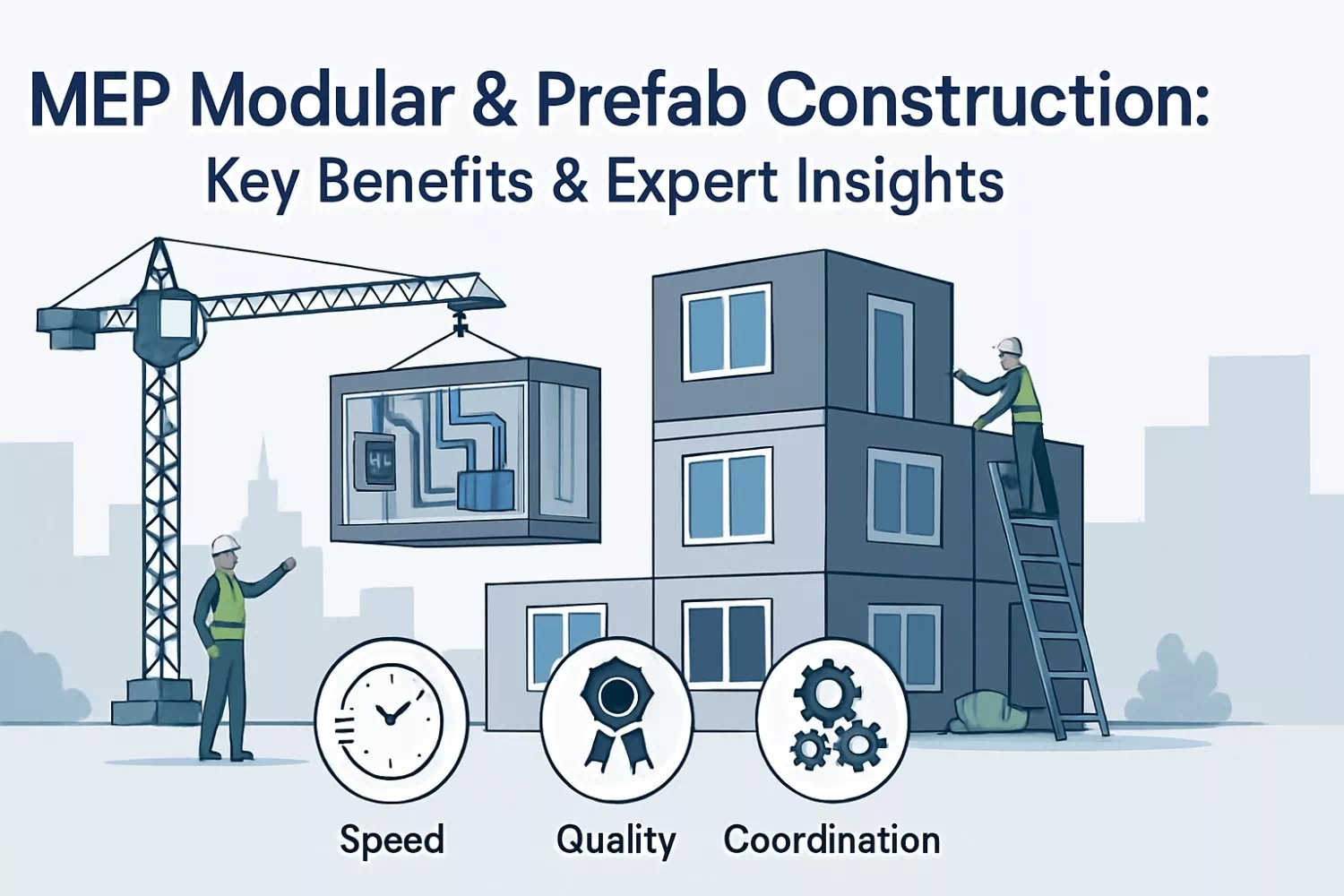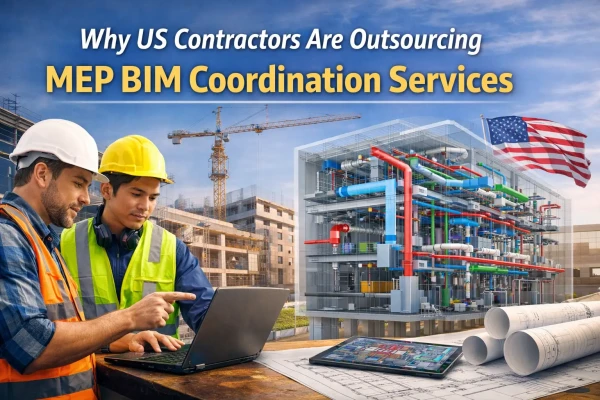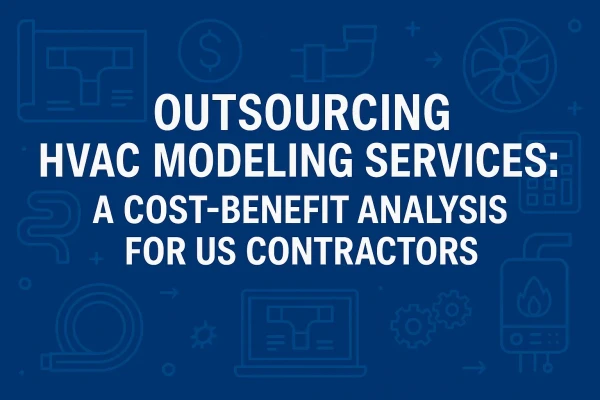Introduction
Construction today faces relentless pressures: tighter schedules, escalating labor costs, skilled workforce shortages, and increasing demands for safety and sustainability. Within this climate, Mechanical, Electrical, and Plumbing (MEP) systems often become critical path activities that can make or break a project timeline.
One proven solution gaining global momentum is MEP modular and prefabricated construction—the process of designing, fabricating, and assembling MEP systems off-site in a controlled environment before installing them on the jobsite. Supported by BIM, VDC, and DFMA principles, MEP prefab is no longer a niche approach but a mainstream strategy embraced by contractors, developers, and owners.
What Is MEP Modular & Prefabricated Construction?
At its core, MEP prefabrication means building system components—such as pipe spools, multi-trade racks, riser modules, skids, and bathroom pods—off-site in a factory or fabrication shop. These assemblies are then transported to the project site for rapid installation.
Unlike traditional stick-built methods, prefab leverages BIM-enabled coordination, CNC fabrication, QA/QC processes, and just-in-time logistics. The result? Higher quality, faster installation, fewer clashes, and safer working conditions.
Why Owners & Contractors Are Embracing Prefab: Top Benefits
Schedule Compression
- Projects finish 30–50% faster with modular techniques.
- Multi-trade MEP racks reduce sequencing bottlenecks.
- Earlier occupancy creates direct revenue gains.
Cost Predictability & Savings
- 5–10% cost savings via reduced rework and labor efficiency.
- 71% of contractors saw improved logistics with prefab workflows.
- Owners benefit from predictable budgets and fewer change orders.
Safety Improvements
- Up to 80% fewer reportable accidents.
- Hazardous tasks shifted to controlled shop environments.
- Less overhead work and congested site activity.
Quality & Standardization
- QA/QC procedures and FAT ensure higher quality.
- BIM eliminates clashes before fabrication.
- Fewer punch-list items and commissioning delays.
Sustainability & Waste Reduction
- Waste reduced to less than 5% compared to on-site builds.
- Better recycling and optimized material use.
- Lower carbon footprint from transport/logistics.
Labor Productivity & Workforce Challenges
- Factory settings allow semi-skilled labor efficiency.
- On-site teams focus on installation instead of fabrication.
- Flexibility in scaling workforce as needed.
Adaptability & Future Flexibility
- Prefab assemblies designed for disassembly and reuse.
- Hospitals and data centers specify modular MEP pods.
- Developers benefit from long-term O&M flexibility.
BIM, VDC & DFMA: The Digital Backbone of Prefab
BIM/VDC enable coordinated, clash-free 3D models at fabrication level (LOD 300–400). These models produce shop drawings, BOMs, and CNC outputs directly, eliminating manual errors. QR codes ensure digital traceability, while integrated workflows support asset data handover and facility management.
Case Study: Prefab MEP in a Multifamily Tower
- 40% faster install (8 weeks vs. 14 weeks)
- 7% cost savings overall
- TRIR reduced from 4.5 to 1.2
- 95% of clashes resolved before fabrication via BIM
Challenges like early design freeze and logistics were solved with QR-tagging and proactive planning. Occupancy began 6 weeks earlier, generating additional revenue.
Risks & How to Mitigate Them
- Design freeze risk: Early stakeholder buy-in and reviews.
- Logistics challenges: Just-in-time delivery and storage strategies.
- Commercial barriers: Clear contracts and risk-sharing.
- Tolerance issues: Digital surveys and QA at both ends.
Implementation Playbook: Step-by-Step
- Assess opportunity → Identify repeatable assemblies
- Set prefab strategy → Define scope (racks, skids, pods)
- Design digitally → Clash-free BIM model at fabrication LOD
- Select partners → Choose vendors early
- Prototype & FAT → Validate assemblies
- Plan logistics → Just-in-time sequencing
- Install & SAT → Quick install with barcoded modules
- Close-out & lessons learned → Feed into next project
Frequently Asked Questions
Q1: What are the top benefits of MEP prefabrication?
Faster delivery (30–50%), 5–10% cost savings, less than 5% waste, up to 80% fewer accidents, and better quality.
Q2: Does prefab cost more initially?
Yes, unit costs can be higher, but overall project cost is lower with reduced rework and early occupancy.
Q3: Which sectors benefit most?
Healthcare, hospitality, data centers, multifamily housing, and industrial facilities.
Q4: How does BIM support prefab?
By enabling accurate detailing, shop drawings, fabrication outputs, and clash-free coordination.
Q5: What challenges exist?
Design freeze, logistics, and stakeholder resistance—but manageable with strong workflows.





